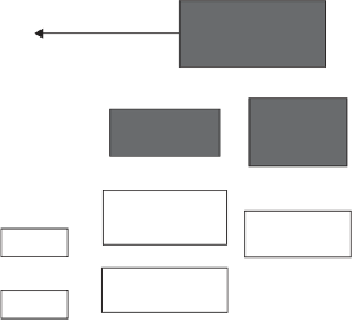Environmental Engineering Reference
In-Depth Information
Each
representative
species
Total % food loss
sum all sources:
% of food
×
% of habitat lost
Reliance on
affected
habitat
Food
source 1(%)
Identify
requirements
No reliance on
affected habitat
% Habitat
affected
Food 2
No food loss
to rep. species
Food 3
FIGURE 7.9
Calculation of food quantity loss.
typical seal life span (greater than 20 years) were taken into account, this
level of risk over the 13-year operation of the mine was deemed acceptable.
7.2.10
Ecological Risk Assessment and Environmental Impact Analysis
Ecological risk assessment concepts can be transferred to impact analysis in
two ways. First it can be used as a distinct tool to evaluate impacts to ecologi-
cal resources as part of a comprehensive environmental analysis, as illustrated
in the AJ Mine case study. Second, the concept can be adapted and applied to
other environmental resources potentially impacted by the proposed action
or an alternative. The adaptation to other environmental resources would
incorporate the endpoint concepts, defining the desired state of the resource
and then the degree of impact would reflect the achievement of the endpoint.
As in the AJ Mine example, this concept can be structured to reflect not just
impact versus no impact, but also the degree of impact. The critical hypothesis
testing component of the ecological risk assessment related to measurement
endpoints can also be applied to other environmental resources to strengthen
the objectivity and quantification in impact prediction.
The development of an impact prediction conceptual model (see Section
5.3.1) as part of an environmental impact analysis can also benefit from
the ecological risk assessment process. The risk assessment conceptual site
model is prepared in multiple iterations with more detail and quantification
included at each level. This approach can also be applied in environmental
analysis to refine the impact prediction conceptual model as more informa-
tion on affected environment, alternatives, and impacts is developed.
Ecological risk assessment and environmental impact analysis do differ
in one respect. The impact analysis predicts the future condition based on
changes in current conditions produced by the proposed action and alterna-
tives. In contrast, the classic ecological risk assessment at a hazardous waste





















Search WWH ::

Custom Search